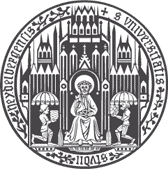Semantic relations in knowledge repositories and in texts
Module Description
| Course |
Module Abbreviation |
Credit Points
|
| BA-2010[100%|75%] |
CS-CL |
6 LP |
| BA-2010[50%] |
BS-CL |
6 LP |
| BA-2010[25%] |
BS-AC |
4 LP |
| BA-2010 |
AS-FL |
8 LP |
| Master |
SS-CL, SS-FAL |
8LP |
| Lecturer |
Vivi Nastase |
| Module Type |
PS/HS |
| Language |
English |
| First Session |
24.10.2018 |
| Time and Place |
Wednesday, 14:15-15:45, INF 329 / SR 26 |
| Commitment Period |
tbd. |
Prerequisite for Participation
Assessment
- 20% questions and participation
- 40% presentation
- 40% project or exam
Inhalt
Semantic relations describe how things interact or how they are related. We can find such relations in ontologies that capture knowledge about the world and how the objects in the world are related, and in texts where entities and their relations and interactions are mentioned. We need both these sources of semantic relations -- we can use texts to populate ontologies, and we can use ontologies to make sense of new texts.
The course will focus mostly on semantic relations between nominals, and we'll explore these relations from both a theoretical and a practical perspective. From a theoretical point of view we will review the development and evolution of formal exploration of semantic relations, to understand what brought us to the current status quo, and where this is headed. From a practical point of view we will discuss the various types of information that are relevant and useful for automating the extraction and acquisition of semantic relations, starting from basic (and older, but quite enduring) approaches like bootstrapping, all the way to neural-based and graph embedding methods.
Module Overview
Agenda
| Date |
Session |
Materials |
| 24.10.2018 |
What? Why? + Historical overview |
Introduction |
| 31.10.2018 |
Relation types, Schemas, Features |
Part 2
A list of papers for presentations
The project description
|
| 7.11.2018 |
Features (cont.), Supervised Methods, Unsupervised Methods |
Part 3 |
| 14.11.2018 |
Unsupervised Methods (cont.), Neural Models |
Part 4 |
| 21.11.2018 |
Neural Models (cont.)
Reading group |
Part 5
[Max] Snowball: Extracting Relations from Large Plain-Text Collections Agichtein and Gravano, DL 2000
|
| 28.11.2018 |
Reading group |
[Maja] Unsupervised Discovery of Generic Relationships Using Pattern Clusters and its Evaluation by Automatically Generated SAT Analogy Questions Davidov and Rappoport, ACL-HLT 2008
[Jason] Learning word representations by jointly modeling syntagmatic and paradigmatic relations Sun et al., ACL 2015 |
| 5.12.2018 |
Reading group |
[Miriam] Identifying functional relations in web text Lin et al., EMNLP 2010
[Antonia] Identifying relations for open information extraction Fader et al., EMNLP 2011
|
| 12.12.2018 |
Reading group |
[Livia] Improved relation extraction with feature-rich compositional embedding models Gormley et al., EMNLP 2015
[Laura] Employing word representations and regularization for domain adaptation of relation extraction Nguyen et al., ACL 2014
|
| 19.12.2018 |
Reading group |
[Ozan] A Systematic Exploration of the Feature Space for Relation Extraction Jiang and Zhai, NAACL-HLT 2007
[Simon] Distant supervision for relation extraction with an incomplete knowledge base Fan et al., ACL 2014 |
| 9.1.2019 |
Reading group |
[Nathaniel] Relation classification via convolutional deep neural network Zeng et al., COLING 2014 |
| 16.1.2019 |
Reading group |
[Nadia] Exploiting Background Knowledge for Relation Extraction Chang and Roth, CoLing 2010
[Xin Sun] Improved relation classification by deep recurrent neural networks with data augmentation Xu et al., CoLing 2016 |
| 23.1.2019 |
Reading group |
[Wenzhe] Task-oriented learning of word embeddings for semantic relation classification Hashimoto et al., CoNLL 2015
|
| 30.1.2019 |
Reading group |
[all] Relation extraction with matrix factorization and universal schemas Riedel et al., NAACL-HLT 2013
Robust Domain Adaptation for Relation Extraction via Clustering Consistency Nguyen et al., ACL 2014
|
| 6.2.2018 |
Reading group |
[all] Representing text for joint embedding of text and knowledge bases Toutanova et al., EMNLP 2015
Relation schema induction using tensor factorization with side information Nimishakavi et al., EMNLP 2016
|
Literature
Nastase et al., 2013 Semantic Relations Between Nominals
Nickel et al., 2015 A Review of Relational Machine Learning for Knowledge Graphs
+ papers chosen for presentations



